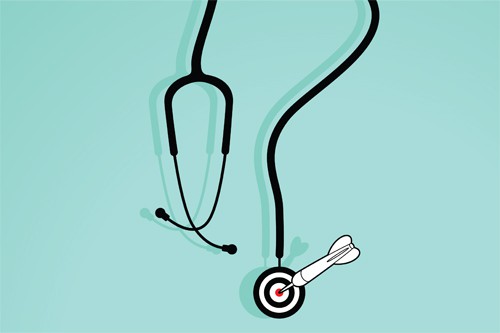
The National Institute of Health and Care Excellence (NICE) issued its first appraisal guidance in March 2000 (on the extraction of wisdom teeth, since you ask). It has subsequently grown into a key reference for advice on safe and cost-effective practice in health and social care, not only in England and Wales, but far outside its national boundaries too.
Many have questioned NICE’s approach over the years, and the 2010 creation of the Cancer Drugs Fund (CDF) has certainly muddied the waters. Some argue the CDF has undermined NICE, a point the CDF chair Professor Peter Clark acknowledged recently at a Westminster Health Forum event in London, saying he “regretted” the notion.
Although Clark was clear that the CDF “in no way pretends to be NICE”, one could argue, it does. After all, if NICE says no to a cancer drug based on costs or inadequate data, the CDF can still pick it up and allocate funding if deemed it fit for purpose. Where does that then leave the value of NICE’s appraisal process?
Changing times
Speaking last month at the same event deputy chief executive and director of health and social care at NICE Gillian Leng said: “Things can improve and we are aware of that. Following the consultation on potential methods to take into account wider societal benefits that we ran last year, [we saw] that there were things that people were feeding back that we had needed to take into account,” she said.
Indeed, despite its rocky early relationship with the industry, few now argue NICE doesn’t have a key role to play – it’s just the exact shape of this role that is exercising many in pharma (not to mention government and the health service).
GlaxoSmithKline is one company preparing to launch a number of new medicines and keeping a close eye on how they will be evaluated by NICE.
Dr Julia Earnshaw, VP of health outcomes and regulatory affairs at GSK UK, told the Westminster Health Forum that gaining NICE approval can be a “highly fragmented duplicated process … with multiple groups reviewing the evidence in different ways”, noting its time-consuming nature.
Earnshaw called for “one single source of guidance, with NICE doing it in a way that’s fit for purpose with a different approach for different circumstances dependant on the decision problem” with a more pragmatic approach. She additionally posed the question, should NICE review all new medicines rather than just the selected group that it does now?
Things can improve and we are aware of that – NICE Gillian Leng
Patient impact
Looking beyond the process to its direct effect on patients, negative NICE decisions often provoke patient ire – with the watchdog’s twin mandate to assess cost and clincal effectiveness muddying the waters when it comes to the best drug to receive.
Nick Bason, member of the executive group at Patients Involved, says that, although the NHS is consistently at the top of political concerns, charities and help groups see endless numbers of patients for whom the system has failed and who find it difficult to understand the reasons why.
“Patients and health organisations will put a lot of work into making representations through appraisal committees, yet there is very little feedback or transparency whether, if at all, that submission has been taken into account by the appraisal committee,” said Bason.
A time of change
NICE is set to face numerous challenges in 2015: the rise in multiple morbidities is an on-going problem, an information project about drugs and individual characteristics with the RCGP is ongoing, and then there is its soon-to-be-launched six-month review to ensure drug use is keeping up to standards.
Leng also said NICE is wanted to “ensure that we review the methods and respond to what people are telling us,” possibly mindful of recent criticism.
But alongside these the Institute’s real issue will be ensuring the standing of its processes in the face of threats like the CDF and keeping them fit for purpose and capable of responding to emerging strands within medicine, such as new treatments for rare diseases and different types of diagnostics.




